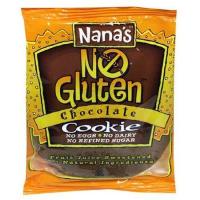 What you eat plays just a big a role in creating smooth, clear skin, and shiny, luscious hair as the products you use. Check out 5 Foods to Maximize Beauty for the best foods for healthy skin, and read on for the best nutrients and foods to prevent dry, wintery hair, hair loss, and ways to eat your way to lusciously healthy locks… Luckily, the foods below aren’t just the key to amazing hair, they are a blueprint to ideal health!
What you eat plays just a big a role in creating smooth, clear skin, and shiny, luscious hair as the products you use. Check out 5 Foods to Maximize Beauty for the best foods for healthy skin, and read on for the best nutrients and foods to prevent dry, wintery hair, hair loss, and ways to eat your way to lusciously healthy locks… Luckily, the foods below aren’t just the key to amazing hair, they are a blueprint to ideal health!
Omega-3 Fatty Acids
 Found in sardines, salmon, walnuts, flaxseeds and seaweed
Found in sardines, salmon, walnuts, flaxseeds and seaweed
One of the best nutrients for overall beauty, including hair, omega-3s prevent inflammation and keep our systems moisturized and healthy. Stock up on these foods to keep hair shiny and lush, prevent dry scalp and hair loss, and promote hair growth!
Vitamin B12 & B7 (Biotin)
 Found in fish, beans and legumes, whole eggs, swiss chard, berries, carrots, nuts and nut butters and oatmeal
Found in fish, beans and legumes, whole eggs, swiss chard, berries, carrots, nuts and nut butters and oatmeal
These two forms of vitamin B are key for healthy hair, and promote hair growth, strength, elasticity, and prevent breakage! In conjunction with a good conditioner, a diet rich in these foods will ensure the healthiest hair possible.
Protein
 Found in eggs, beans, fermented soy like tempeh, quinoa, nuts, fish, and free-range chicken
Found in eggs, beans, fermented soy like tempeh, quinoa, nuts, fish, and free-range chicken
You need to eat a moderate amount of healthy proteins every day to maintain hair growth and strength. Protein is a building block of hair, so if you find that your hair is dull, brittle and prone to breakage, increase your consumption of healthy protein to literally build better hair! But the emphasis here is on healthy — a diet with too much animal protein like red meat and pork increases risk of cancer and other diseases, so stick to the foods above!
Vitamins A & C
 Found in leafy greens like kale, spinach, and chard; orange foods like carrots, sweet potatoes, butternut squash, and bell peppers; cruciferous vegetables like cabbage, brussel sprouts, and broccoli; and fruit like strawberries, citrus, and kiwi.
Found in leafy greens like kale, spinach, and chard; orange foods like carrots, sweet potatoes, butternut squash, and bell peppers; cruciferous vegetables like cabbage, brussel sprouts, and broccoli; and fruit like strawberries, citrus, and kiwi.
In combination, these vitamins help your body to produce sebum, which is what gives you beautiful, shiny hair. Load up on these foods, and you’ll need to use less product and synthetic oils to keep your hair from drying out! Not to mention, these superfoods keep you healthy, energized, and boost your immunity.
Zinc
 Found in nuts and seeds, seafood like oysters, scallops, lobster and shrimp, and oatmeal
Found in nuts and seeds, seafood like oysters, scallops, lobster and shrimp, and oatmeal
Zinc is a vital nutrient that prevents hair-loss and keeps hair full. Increase consumption of these foods preemptively if you have a family history of thinning hair or baldness, or just to make sure your hair stays put as you age!
—-
Natasha Uspensky, chhc
Health & Nutrition Counselor
NU Health & Wellness
Like this:
Like Loading...
 Considered extreme even among the strictest of dieters, a ketogenic diet is one that is high in fat and protein and low in carbohydrates, making it especially difficult to maintain. One Zeel member expressed their concerns recently, writing in, “I have been trying to get my body to a ketogenic state, but I am having trouble.”
Considered extreme even among the strictest of dieters, a ketogenic diet is one that is high in fat and protein and low in carbohydrates, making it especially difficult to maintain. One Zeel member expressed their concerns recently, writing in, “I have been trying to get my body to a ketogenic state, but I am having trouble.”








































